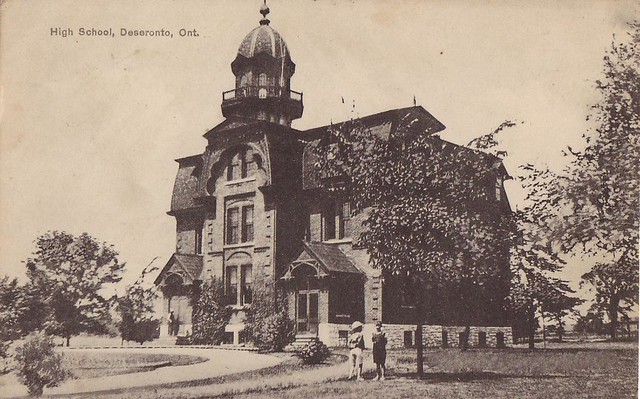 |
| above the town |
A 2014 Kingston Whig Standard article I found online this week, by Susanna McLeod, captured the end of that era so succinctly. She recounts the May 25, 1896 fire, when "the Rathbun Company and Deseronto were thrown into disaster." A fire starting on the docks enveloped a number of the Rathbun concerns - flour mill, bran house, grain elevator, coal sheds, trestle docks, chemical works, stocks of timber, and houses. You begin to see what a colossal enterprise ran in this small town, and what a blow the fire was.
The town is still quite lovely, but unsettling. The height of land above highway 2, which slopes down to the bayshore is scenic; there are several fine old homes set amid lovely old trees up there. One can linger on the elevated sidewalk built above the level of the road. Below, many fine commercial buildings, and other striking homes.
 Enjoy with me some of the town's fine buildings, and imagine the good years.
Enjoy with me some of the town's fine buildings, and imagine the good years.An example of the way things used to be is the architecturally overdressed High School, below seen in a post card I found in the Deseronto Archives online. To the right is what survived. A couple of very nervous teenagers bolted inside as I took off my lens cap.
 |
| Deseronto High School (from the collection of R.N. Goodfellow) |
 |
| 1901 Romanesque Revival post office |
 |
| 1901 vaudeville house - designed by Glanmore's Thomas Hanley |
This post from June 2012, by Archivist Amanda Hill, on the Deseronto Archives website, illustrates the before and after picture of the town, dramatically - and poignantly.
On my tour, I walked past the little house in the big field, and wondered if that open space had been the site of the brick and terra cotta works.








No comments:
Post a Comment